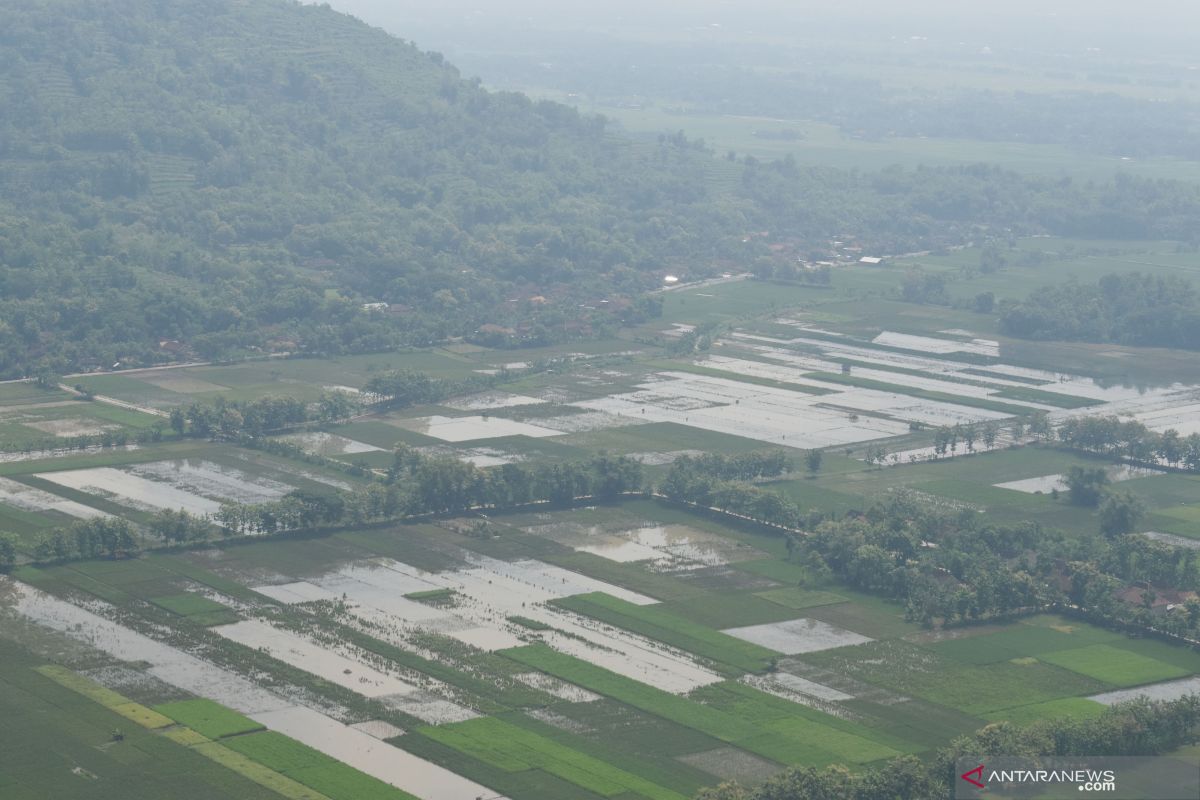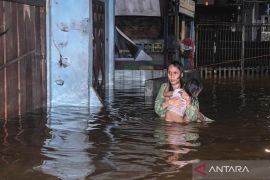However, high precipitation still occurred in several regions and triggered flooding in the provinces of West Java, East Java, Lampung, East Nusa Tenggara, and South Sumatra, among others.
In East Java Province, floods, triggered by heavy rains and the overflowing of several rivers, had inundated 15 districts, since March 5, 2019.
The 15 flood-affected districts included Madiun, Nganjuk, Ngawi, Magetan, Sidoarjo, Kediri, Bojonegoro, Tuban, Gresik, Pacitan, Trenggalek, Ponorogo, and Lamongan.
In Madiun, the worst affected by flooding were 39 villages in eight sub-districts that were inundated, as the Jeroan River spilled over its bank.
Flooding affected 4,317 households, comprising over 17 thousand people; seriously damaged two homes, three dykes, and two bridges; submerged 253 hectares of rice fields; and swept away tens of cattle, goats, and poultry.
The Caruban-Madiun toll road section, spanning from KM 603+600 to KM 604+000, was also disrupted by the floodwaters for 24 hours this week.
Madiun District Head Ahmad Dawami has declared an emergency status for the period from March 6 to March 19, 2019, following the flooding. The letter, declaring the emergency status, was signed by the Madiun district head on March 6.
"Everyone concentrates on flood victims. The district administration has established disaster command posts in every flood-affected sub-district. Community health centers are also on standby," Dawami stated.
East Java Governor Khofifah Indar Parawansa boarded a rubber boat to visit Balerejo Sub-district in Madiun on March 7 to review the flooding-handling efforts there.
She instructed all authorities within the provincial government to get involved directly in handling the impact of floods on the residents in Madiun, in particular.
Concerned authorities within the provincial government are required to directly become engaged in the mitigation efforts to accelerate the restoration of lives of the affected people and to meet their demand for basic necessities.
Those from the provincial government's public works and road construction and maintenance office and the East Java Disaster Mitigation Agency (BPBD), for instance, are responsible for the areas of Pacitan, Madiun, Magetan, and Ngawi Districts.
The disaster zones in the districts of Trenggalek and Nganjuk were handled by those from the provincial government's public works and natural resources office as well as energy and mineral resources office, she revealed.
In Nganjuk, floods, triggered by the overflowing of Kuncir River, submerged residential areas in 15 villages located in six sub-districts. In Ngawi, floodwaters, reaching a height of up to a meter, submerged 4,490 homes in 18 villages located in six sub-districts.
A total of 14 villages in five sub-districts in Trenggalek District also got flooded, as the Ngasinan River overflowed its bank.
Another district, Probolinggo, was hit by whirlwind and heavy rains that damaged the roofs of 45 homes in Tambak Rejo Village.
In addition to East Java, West Java’s Bandung District was flooded. Floods inundated 11 sub-districts, displaced over 22 thousand people, and claimed one life in Bandung, according to the Bandung disaster mitigation office (BPBD).
Baleendah, Dayeuhkolot, and Andir were among the worst flood-affected sub-districts, Achmad Djohara, the acting head of Bandung BPBD, noted on March 7, 2019.
The eight other sub-districts affected by flooding were Cileunyi, Rancaekek, Majalaya, Cicalengka, Cikancung, Ciparay, Katapang, and Kutawaringin.
Floods frequently hit several sub-districts in Bandung District, particularly in Baleendah and Majalaya, which could be flooded 10 times in a year.
Of the total households, 5,271 were located in Baleendah Sub-district, 3,005 in Dayeuhkolot, and 2,370 in Bojongsoang, Sutopo Purwo Nugroho, spokesman of the National Disaster Mitigation Agency (BNPB), noted in a statement.
Flooding also affected 3,383 households in Rancaekek Sub-district, 3,373 in Cileunyi, 1,929 in Majalaya, 2,414 in Banjaran, 85 in Cicalengka, 25 in Kutawaringin, and 250 in Ibun.
A 21-year-old resident of Cigosol Kampong, Andir Village, Baleendah Sub-district, died of electrocution after his home got flooded.
Incessant heavy rains caused Citarum River to spill over its bank and triggered floodwaters to reach heights of between 40 centimeters and 2.8 meters.
"We keep monitoring the flooding and have deployed personnel to help move flood victims to safer places and distribute relief aid. We also coordinate with the relevant parties," he added.
Public facilities, such as school buildings, markets, local government offices, and community health centers, were also submerged by floods.
The local authorities, with the support of military and police personnel, have distributed relief aid and assisted in the evacuation process of flood victims.
Indonesia is prone to geological and hydrometeorological disasters. Last year, during the period from January to mid-December, a total of 2,427 natural disasters had hit the tropical country, leaving at least 4,821 people dead or missing, according to the BNPB.
Of the total, 2,350, or 96.9 percent, of the natural disasters were hydrometeorological in nature, such as floods, landslides, and whirlwinds, while 76, or 3.1 percent, were geological disasters, mainly earthquakes.
Editing by Suharto
(f001/INE)
***3***
Editor: Suharto
Copyright © ANTARA 2019












